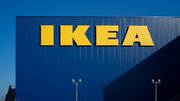Consumer Behavior
3 things retailers should know about search and browse
To deliver relevant search results, retailers need to understand search queries and return the precise results that match what shoppers are looking for.

April 25, 2023 by Sanjay Mehta — Head of Industry, eCommerce, Lucidworks
A recent survey found these three things to be true:
- 73% of shoppers are very open to retailer recommendations.
- 40% of people get a negative impression of a retailer if search results are irrelevant.
- Nearly 100% of shoppers say the search bar is important to their shopping experience.
To deliver relevant recommendations, retailers need to understand what customers could potentially want, even if they're not searching for it.
To deliver relevant search results, retailers need to understand search queries and return the precise results that match what shoppers are looking for.
Retailers that want to optimize the entire online shopping experience will need to toe the line between precision and relevancy.
Getting the best products and content to your customers is a delicate balance. You want to show shoppers products and content that aren't too restrictive or too generic. If they're too restrictive, you could be losing out on an opportunity to showcase products they love but didn't know about. If they're too generic, shoppers leave frustrated because they couldn't find what they wanted.
Here are three tips to ensure recommendations and results are just right.
1. Search Comes First
The core to a great digital experience starts with the search bar. It's the place where shoppers act with the most intent. There are several things retailers and merchandisers need to consider in the search experience.
- Are you able to respond to "natural language" requests? Not all shoppers use the same search terms or they use longer queries that can be difficult for traditional search to understand.
- Are search results being influenced by a shopper's behavior in the current shopping session and any historical behavioral data? Search needs to automatically adjust results based on shopper behavior, the behavior of other similar buyers, and the products and content that merchandisers boost and block.
- Do you surface relevant content in addition to products? Less than one-third of shoppers plan to make a purchase on their first visit. Many are comparing prices, scanning the inventory to get ideas, or online browsing for later in-store purchases.
Luckily, the fix for improving search also improves other navigation features, including landing pages, filters, and product detail pages. For example, the behaviors that are captured across the entire customer journey inform every part of the experience, including what's prioritized in filters and drop-downs. It's all search, even if there isn't a search bar.
2. The Browse Experience Matters Too
- 55% of shoppers go to an online store to browse the inventory to get ideas.
- 32% are looking for recommendations to buy at a physical store.
Digital experiences usually start on a landing page, and then about 35% of shoppers use search. These landing pages can be powered by search and recommenders. Sellers have roughly 30 seconds to make a relevant impression based on effectively predicting intent or shoppers will bounce.
The majority of traffic to these landing pages is coming from external sources such as search engines and social media where user's first declare their intent. When they click on an external result, the landing page itself can be used to derive intent. For example, if they land on a product page then the characteristics of that product and the shopper's context can be used to make the entire experience more relevant.
The same is true if they land on a category, seasonal landing page, collection page, etc.. If they go directly to the home page, for example, we can use machine learning to observe the behaviors and context of all other shoppers in that moment and surface search results and recommendations that drive the most engagement accordingly.
Retailers that push relevant recommendations increase shoppers time on the site, boost add-to-cart rates, and positively grow conversions. When shoppers go to the search bar, they usually have a clear idea of what they're looking for. When shoppers are casually browsing, they're looking for recommendations.
Retailers that can pick up store-specific signals or behaviors can drive more relevant omnichannel recommenders. For example, the store-specific planogram can influence the online assortment. That 'human expertise' used to plan in-person shopping experiences informs how retailers merchandise online to fuel more effective search results and recommendations.
Applying a recommender strategy based on touchpoints and context is also key. As new visitors lack familiarity with a catalog, recommenders for "you may also like", "similar item," and "complete the look" that are placed on a product detail page or the shopping cart page drive purchases for these new shoppers. For known or repeat shoppers, personalized recommenders such as "may we suggest" or "just for you" based on the customer's engagement — past and present — are a great way to drive additional purchases.
Semantic vector search predicts relevance based on what shoppers tend to buy given a specific query, and it does so without curation by merchandisers and search managers. This advanced technology matches customer goals, not just words they type into the search bar.
3. Smart Search and Relevant Recommendations Need to be Automatic
Merchandisers are the vanguard of your digital retail business. They are expected to know what customers are looking for and surface the right products to the right customers at the right time. But even the most savvy merchandisers have trouble keeping pace with the millions of products and digital signals that shoppers send every day.
Without flexible, scalable e-commerce merchandising software, your team is forced to spend numerous hours curating products manually while they could have focused on high-value, strategic initiatives.
AI-powered site search can take visitors to the result they want — even if they aren't using the "right" words or spelling. It helps the system understand user intent beyond the literal meaning of what they typed into the search box, and continues to learn how they interact with the website and content so it can better personalize their experience.
Teams could spend days, months, or even years manually making long lists of synonyms and substitutions. This generates another colossal list of rules and exceptions. Machine learning can be used to better understand meaning and relationships between site content and the people searching it — intelligently strengthening the connective tissue between everything. This takes pressure off of teams that manage the site, and enhances the digital experience for visitors who receive a personalized search experience.





